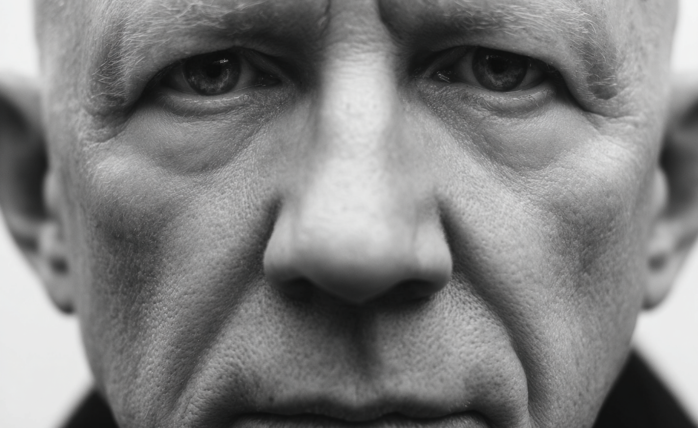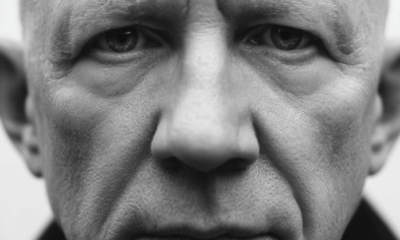Change Your Mindset
50 Famously Successful People Who Failed At First

Not everyone who’s on top today got there with success after success. More often than not, those who history best remembers were faced with numerous obstacles that forced them to work harder and show more determination than others.
Next time you’re feeling down about your failures in college or in a career, keep these fifty famous people in mind and remind yourself that sometimes failure is just the first step towards success.
Successful People Who Failed At First
Business Gurus
These businessmen and the companies they founded are today known around the world, but as these stories show, their beginnings weren’t always smooth.
- Henry Ford: While Ford is today known for his innovative assembly line and American-made cars, he wasn’t an instant success. In fact, his early businesses failed and left him broke five time before he founded the successful Ford Motor Company.
- R. H. Macy: Most people are familiar with this large department store chain, but Macy didn’t always have it easy. Macy started seven failed business before finally hitting big with his store in New York City.
- F. W. Woolworth: Some may not know this name today, but Woolworth was once one of the biggest names in department stores in the U.S. Before starting his own business, young Woolworth worked at a dry goods store and was not allowed to wait on customers because his boss said he lacked the sense needed to do so.
- Soichiro Honda: The billion-dollar business that is Honda began with a series of failures and fortunate turns of luck. Honda was turned down by Toyota Motor Corporation for a job after interviewing for a job as an engineer, leaving him jobless for quite some time. He started making scooters of his own at home, and spurred on by his neighbors, finally started his own business.
- Akio Morita: You may not have heard of Morita but you’ve undoubtedly heard of his company, Sony. Sony’s first product was a rice cooker that unfortunately didn’t cook rice so much as burn it, selling less than 100 units. This first setback didn’t stop Morita and his partners as they pushed forward to create a multi-billion dollar company.
- Bill Gates: Gates didn’t seem like a shoe-in for success after dropping out of Harvard and starting a failed first business with Microsoft co-founder Paul Allen called Traf-O-Data. While this early idea didn’t work, Gates’ later work did, creating the global empire that is Microsoft.
- Harland David Sanders: Perhaps better known as Colonel Sanders of Kentucky Fried Chicken fame, Sanders had a hard time selling his chicken at first. In fact, his famous secret chicken recipe was rejected 1,009 times before a restaurant accepted it.
- Walt Disney: Today Disney rakes in billions from merchandise, movies and theme parks around the world, but Walt Disney himself had a bit of a rough start. He was fired by a newspaper editor because, “he lacked imagination and had no good ideas.” After that, Disney started a number of businesses that didn’t last too long and ended with bankruptcy and failure. He kept plugging along, however, and eventually found a recipe for success that worked.
Scientists and Thinkers
These people are often regarded as some of the greatest minds of our century, but they often had to face great obstacles, the ridicule of their peers and the animosity of society.
- Albert Einstein: Most of us take Einstein’s name as synonymous with genius, but he didn’t always show such promise. Einstein did not speak until he was four and did not read until he was seven, causing his teachers and parents to think he was mentally handicapped, slow and anti-social. Eventually, he was expelled from school and was refused admittance to the Zurich Polytechnic School. It might have taken him a bit longer, but most people would agree that he caught on pretty well in the end, winning the Nobel Prize and changing the face of modern physics.
- Charles Darwin: In his early years, Darwin gave up on having a medical career and was often chastised by his father for being lazy and too dreamy. Darwin himself wrote, “I was considered by all my masters and my father, a very ordinary boy, rather below the common standard of intellect.” Perhaps they judged too soon, as Darwin today is well-known for his scientific studies.
- Robert Goddard: Goddard today is hailed for his research and experimentation with liquid-fueled rockets, but during his lifetime his ideas were often rejected and mocked by his scientific peers who thought they were outrageous and impossible. Today rockets and space travel don’t seem far-fetched at all, due largely in part to the work of this scientist who worked against the feelings of the time.
- Isaac Newton: Newton was undoubtedly a genius when it came to math, but he had some failings early on. He never did particularly well in school and when put in charge of running the family farm, he failed miserably, so poorly in fact that an uncle took charge and sent him off to Cambridge where he finally blossomed into the scholar we know today.
- Socrates: Despite leaving no written records behind, Socrates is regarded as one of the greatest philosophers of the Classical era. Because of his new ideas, in his own time he was called “an immoral corrupter of youth” and was sentenced to death. Socrates didn’t let this stop him and kept right on, teaching up until he was forced to poison himself.
- Robert Sternberg: This big name in psychology received a C in his first college introductory psychology class with his teacher telling him that, “there was already a famous Sternberg in psychology and it was obvious there would not be another.” Sternberg showed him, however, graduating from Stanford with exceptional distinction in psychology, summa cum laude, and Phi Beta Kappa and eventually becoming the President of the American Psychological Association.
Inventors
These inventors changed the face of the modern world, but not without a few failed prototypes along the way.
- Thomas Edison: In his early years, teachers told Edison he was “too stupid to learn anything.” Work was no better, as he was fired from his first two jobs for not being productive enough. Even as an inventor, Edison made 1,000 unsuccessful attempts at inventing the light bulb. Of course, all those unsuccessful attempts finally resulted in the design that worked.
- Orville and Wilbur Wright: These brothers battled depression and family illness before starting the bicycle shop that would lead them to experimenting with flight. After numerous attempts at creating flying machines, several years of hard work, and tons of failed prototypes, the brothers finally created a plane that could get airborne and stay there.
Public Figures
From politicians to talk show hosts, these figures had a few failures before they came out on top.
- Winston Churchill: This Nobel Prize-winning, twice-elected Prime Minster of the United Kingdom wasn’t always as well regarded as he is today. Churchill struggled in school and failed the sixth grade. After school he faced many years of political failures, as he was defeated in every election for public office until he finally became the Prime Minister at the ripe old age of 62.
- Abraham Lincoln: While today he is remembered as one of the greatest leaders of our nation, Lincoln’s life wasn’t so easy. In his youth he went to war a captain and returned a private (if you’re not familiar with military ranks, just know that private is as low as it goes.) Lincoln didn’t stop failing there, however. He started numerous failed business and was defeated in numerous runs he made for public office.
- Oprah Winfrey: Most people know Oprah as one of the most iconic faces on TV as well as one of the richest and most successful women in the world. Oprah faced a hard road to get to that position, however, enduring a rough and often abusive childhood as well as numerous career setbacks including being fired from her job as a television reporter because she was “unfit for tv.”
- Harry S. Truman: This WWI vet, Senator, Vice President and eventual President eventually found success in his life, but not without a few missteps along the way. Truman started a store that sold silk shirts and other clothing–seemingly a success at first–only go bankrupt a few years later.
- Dick Cheney: This recent Vice President and businessman made his way to the White House but managed to flunk out of Yale University, not once, but twice. Former President George W. Bush joked with Cheney about this fact, stating, “So now we know –if you graduate from Yale, you become president. If you drop out, you get to be vice president.”
Hollywood Types
These faces ought to be familiar from the big screen, but these actors, actresses and directors saw their fair share of rejection and failure before they made it big.
- Jerry Seinfeld: Just about everybody knows who Seinfeld is, but the first time the young comedian walked on stage at a comedy club, he looked out at the audience, froze and was eventually jeered and booed off of the stage. Seinfeld knew he could do it, so he went back the next night, completed his set to laughter and applause, and the rest is history.
- Fred Astaire: In his first screen test, the testing director of MGM noted that Astaire, “Can’t act. Can’t sing. Slightly bald. Can dance a little.” Astaire went on to become an incredibly successful actor, singer and dancer and kept that note in his Beverly Hills home to remind him of where he came from.
- Sidney Poitier: After his first audition, Poitier was told by the casting director, “Why don’t you stop wasting people’s time and go out and become a dishwasher or something?” Poitier vowed to show him that he could make it, going on to win an Oscar and become one of the most well-regarded actors in the business.
- Jeanne Moreau: As a young actress just starting out, this French actress was told by a casting director that she was simply not pretty enough to make it in films. He couldn’t have been more wrong as Moreau when on to star in nearly 100 films and win numerous awards for her performances.
- Charlie Chaplin: It’s hard to imagine film without the iconic Charlie Chaplin, but his act was initially rejected by Hollywood studio chiefs because they felt it was a little too nonsensical to ever sell.
- Lucille Ball: During her career, Ball had thirteen Emmy nominations and four wins, also earning the Lifetime Achievement Award from the Kennedy Center Honors. Before starring in I Love Lucy, Ball was widely regarded as a failed actress and a B movie star. Even her drama instructors didn’t feel she could make it, telling her to try another profession. She, of course, proved them all wrong.
- Harrison Ford: In his first film, Ford was told by the movie execs that he simply didn’t have what it takes to be a star. Today, with numerous hits under his belt, iconic portrayals of characters like Han Solo and Indiana Jones, and a career that stretches decades, Ford can proudly show that he does, in fact, have what it takes.
- Marilyn Monroe: While Monroe’s star burned out early, she did have a period of great success in her life. Despite a rough upbringing and being told by modeling agents that she should instead consider being a secretary, Monroe became a pin-up, model and actress that still strikes a chord with people today.
- Oliver Stone: This Oscar-winning filmmaker began his first novel while at Yale, a project that eventually caused him to fail out of school. This would turn out to be a poor decision as the the text was rejected by publishers and was not published until 1998, at which time it was not well-received. After dropping out of school, Stone moved to Vietnam to teach English, later enlisting in the army and fighting in the war, a battle that earning two Purple Hearts and helped him find the inspiration for his later work that often center around war.
Writers and Artists
We’ve all heard about starving artists and struggling writers, but these stories show that sometimes all that work really does pay off with success in the long run.
- Vincent Van Gogh: During his lifetime, Van Gogh sold only one painting, and this was to a friend and only for a very small amount of money. While Van Gogh was never a success during his life, he plugged on with painting, sometimes starving to complete his over 800 known works. Today, they bring in hundreds of millions.
- Emily Dickinson: Recluse and poet Emily Dickinson is a commonly read and loved writer. Yet in her lifetime she was all but ignored, having fewer than a dozen poems published out of her almost 1,800 completed works.
- Theodor Seuss Giesel: Today nearly every child has read The Cat in the Hat or Green Eggs and Ham, yet 27 different publishers rejected Dr. Seuss’s first book To Think That I Saw It on Mulberry Street.
- Charles Schultz: Schultz’s Peanuts comic strip has had enduring fame, yet this cartoonist had every cartoon he submitted rejected by his high school yearbook staff. Even after high school, Schultz didn’t have it easy, applying and being rejected for a position working with Walt Disney.
- Steven Spielberg: While today Spielberg’s name is synonymous with big budget, he was rejected from the University of Southern California School of Theater, Film and Television three times. He eventually attended school at another location, only to drop out to become a director before finishing. Thirty-five years after starting his degree, Spielberg returned to school in 2002 to finally complete his work and earn his BA.
- Stephen King: The first book by this author, the iconic thriller Carrie, received 30 rejections, finally causing King to give up and throw it in the trash. His wife fished it out and encouraged him to resubmit it, and the rest is history, with King now having hundreds of books published the distinction of being one of the best-selling authors of all time.
- Zane Grey: Incredibly popular in the early 20th century, this adventure book writer began his career as a dentist, something he quickly began to hate. So, he began to write, only to see rejection after rejection for his works, being told eventually that he had no business being a writer and should given up. It took him years, but at 40, Zane finally got his first work published, leaving him with almost 90 books to his name and selling over 50 million copies worldwide.
- J. K. Rowling: Rowling may be rolling in a lot of Harry Potter dough today, but before she published the series of novels she was nearly penniless, severely depressed, divorced, trying to raise a child on her own while attending school and writing a novel. Rowling went from depending on welfare to survive to being one of the richest women in the world in a span of only five years through her hard work and determination.
- Monet: Today Monet’s work sells for millions of dollars and hangs in some of the most prestigious institutions in the world. Yet during his own time, it was mocked and rejected by the artistic elite, the Paris Salon. Monet kept at his impressionist style, which caught on and in many ways was a starting point for some major changes to art that ushered in the modern era.
- Jack London: This well-known American author wasn’t always such a success. While he would go on to publish popular novels like White Fang and The Call of the Wild, his first story received six hundred rejection slips before finally being accepted.
- Louisa May Alcott: Most people are familiar with Alcott’s most famous work, Little Women. Yet Alcott faced a bit of a battle to get her work out there and was was encouraged to find work as a servant by her family to make ends meet. It was her letters back home during her experience as a nurse in the Civil War that gave her the first big break she needed.
Musicians
While their music is some of the best selling, best loved and most popular around the world today, these musicians show that it takes a whole lot of determination to achieve success.
- Wolfgang Amadeus Mozart: Mozart began composing at the age of five, writing over 600 pieces of music that today are lauded as some of the best ever created. Yet during his lifetime, Mozart didn’t have such an easy time, and was often restless, leading to his dismissal from a position as a court musician in Salzberg. He struggled to keep the support of the aristocracy and died with little to his name.
- Elvis Presley: As one of the best-selling artists of all time, Elvis has become a household name even years after his death. But back in 1954, Elvis was still a nobody, and Jimmy Denny, manager of the Grand Ole Opry, fired Elvis Presley after just one performance telling him, “You ain’t goin’ nowhere, son. You ought to go back to drivin’ a truck.”
- Igor Stravinsky: In 1913 when Stravinsky debuted his now famous Rite of Spring, audiences rioted, running the composer out of town. Yet it was this very work that changed the way composers in the 19th century thought about music and cemented his place in musical history.
- The Beatles: Few people can deny the lasting power of this super group, still popular with listeners around the world today. Yet when they were just starting out, a recording company told them no. The were told “we don’t like their sound, and guitar music is on the way out,” two things the rest of the world couldn’t have disagreed with more.
- Ludwig van Beethoven: In his formative years, young Beethoven was incredibly awkward on the violin and was often so busy working on his own compositions that he neglected to practice. Despite his love of composing, his teachers felt he was hopeless at it and would never succeed with the violin or in composing. Beethoven kept plugging along, however, and composed some of the best-loved symphonies of all time–five of them while he was completely deaf.
Athletes
While some athletes rocket to fame, others endure a path fraught with a little more adversity, like those listed here.
- Michael Jordan: Most people wouldn’t believe that a man often lauded as the best basketball player of all time was actually cut from his high school basketball team. Luckily, Jordan didn’t let this setback stop him from playing the game and he has stated, “I have missed more than 9,000 shots in my career. I have lost almost 300 games. On 26 occasions I have been entrusted to take the game winning shot, and I missed. I have failed over and over and over again in my life. And that is why I succeed.”
- Stan Smith: This tennis player was rejected from even being a lowly ball boy for a Davis Cup tennis match because event organizers felt he was too clumsy and uncoordinated. Smith went on to prove them wrong, showcasing his not-so-clumsy skills by winning Wimbledon, U. S. Open and eight Davis Cups.
- Babe Ruth: You probably know Babe Ruth because of his home run record (714 during his career), but along with all those home runs came a pretty hefty amount of strikeouts as well (1,330 in all). In fact, for decades he held the record for strikeouts. When asked about this he simply said, “Every strike brings me closer to the next home run.”
- Tom Landry: As the coach of the Dallas Cowboys, Landry brought the team two Super Bowl victories, five NFC Championship victories and holds the records for the record for the most career wins. He also has the distinction of having one of the worst first seasons on record (winning no games) and winning five or fewer over the next four seasons.
Life
10 Research-Backed Steps to Create Real Change This New Year
This New Year could finally be the one where you break old patterns and create real, lasting change.

Every New Year, we make plans and set goals, but often repeat old patterns. (more…)
Change Your Mindset
The Silent Skill That Makes People Respect You Instantly
What truly earns respect and why most people go about it the wrong way

Everybody craves respect but not everyone earns it. Some people believe that a title, years of experience, or a position of authority automatically entitles them to respect. (more…)
Change Your Mindset
How to Turn Your Mind Into Your Greatest Asset (Instead of Your Enemy)
The thoughts you feed your mind today quietly become the life you live tomorrow.

The human mind has two parts: the conscious mind and the subconscious mind. Both work together, but each has a very distinct role in shaping your life, decisions, habits, and results. (more…)
Did You Know
The Success Patterns You Inherited (And Didn’t Notice)
Your family history may hold the key to why you think, act, and feel the way you do today.

Who are you? Your experiences and your family’s narratives and legacies contribute to your identity. Your ancestry contains individual traits and forces that have been inherited over the years. It also carries the fights and victories of your forebears and older family members. (more…)
-

 Did You Know4 weeks ago
Did You Know4 weeks agoThe Success Patterns You Inherited (And Didn’t Notice)
-

 Entrepreneurs3 weeks ago
Entrepreneurs3 weeks agoThe Essential Skills Every Entrepreneur Needs In 2026
-

 Change Your Mindset3 weeks ago
Change Your Mindset3 weeks agoHow to Turn Your Mind Into Your Greatest Asset (Instead of Your Enemy)
-

 Change Your Mindset3 weeks ago
Change Your Mindset3 weeks agoThe Silent Skill That Makes People Respect You Instantly
-

 Life2 weeks ago
Life2 weeks ago10 Research-Backed Steps to Create Real Change This New Year
-

 Tech2 weeks ago
Tech2 weeks agoWhat’s in a Name? How to Get Your Domain Right
-

 Did You Know1 week ago
Did You Know1 week agoHow Skilled Migrants Are Building Successful Careers After Moving Countries

























18 Comments